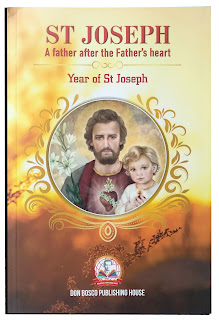The Handmaid of the Lord
“Behold
the handmaid of the Lord. Be it done to me according to Your word” (Lk 1:38) If
I hadn’t known better, I would definitely have thought that there were the
words of Mother Teresa. A look at her life will reveal why the above verse is
characteristic of her and perhaps even descriptive of her existence.
Mother
Teresa was born Agnes Gonxa in Skopje (modern Macedonia) to Nikola and Drane Bojaxhiu. After
having lived in Macedonia for eighteen years, she moved to Ireland and then to
India, where she lived for most of her life. She
was fascinated by stories of the lives of missionaries and their service in Bengal, and by the age of 12 had become convinced that she
should commit herself to a religious way of life. She arrived in India in 1929,
and began her novitiate in Darjeeling, near the Himalayan mountains, where she learnt Bengali and taught at St. Teresa's School, a schoolhouse close to
her convent. She took her first religious vows as a nun on 24 May 1931. At that time she chose to be
named after Thérèse de
Lisieux, the patron saint of missionaries, but because one nun in the convent had
already chosen that name, Agnes opted for the Spanish spelling of Teresa.
Teresa served there for almost twenty years and in 1944 was appointed
headmistress.
She was happy in the
school environment but began to feel disturbed by the dire poverty that lay
just outside the convent’s secure walls. Bengal was recovering from a severe
famine besides shouldering the weight of a developing state. It was while still
a Loreto nun that she received her “call within a call”. She went on to found
the Missionaries of
Charity, a Roman Catholic religious congregation, which in 2012 consisted of over 4,500 sisters and was
active in 133 countries. They run hospices and homes for people with HIV/AIDS, leprosy and tuberculosis; soup
kitchens; dispensaries and mobile clinics;
children's and family counselling programmes; orphanages and schools. The amount of support they receive both
materially and by way of prayers is testimony to the kind of work they do.
Though there are a few who cast a slur on Missionaries of Charity, the majority
looks on them with reverence and compassion. One can only marvel at the way God
has used and continues to use them to reach out to the destitute and neglected.
The sisters must adhere
to the vows of chastity,
poverty, and obedience, as well as a fourth vow, to
give "wholehearted free service to the poorest of the poor". This
final vow has also been taken up by other congregations, ours included, but is
not expressed as a formal vow as much as a deep founded conviction. Our
constitutions constantly make reference to the poorest. This serves to remind
us of those who ought to be the primary beneficiaries of all our work.
Mother Teresa was the
recipient of numerous honours, including the 1979 Nobel Peace Prize. On 19 October 2003, she was beatified as "Blessed Teresa of Calcutta". A second
miracle was credited to her intercession by Pope
Francis, in December 2015, paving the way for her
to be recognised as a saint by the Roman Catholic Church. Her
canonization has been scheduled for 4 September 2016.




Comments
Post a Comment